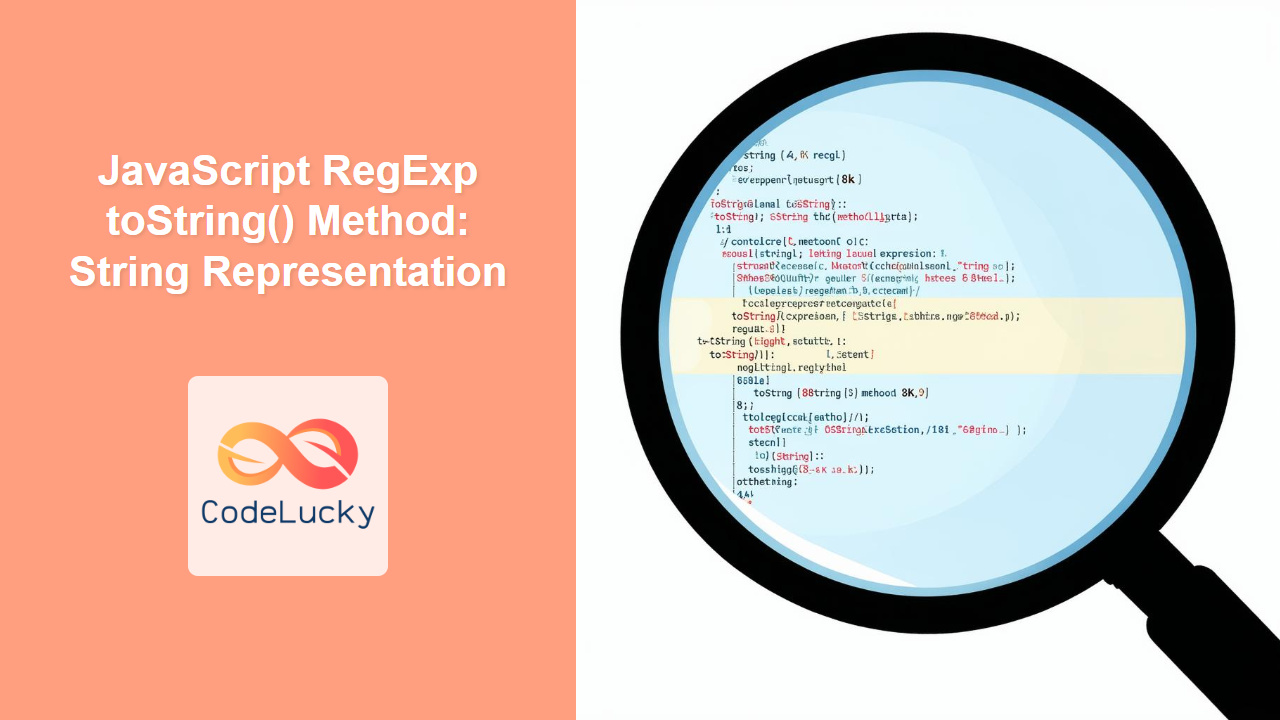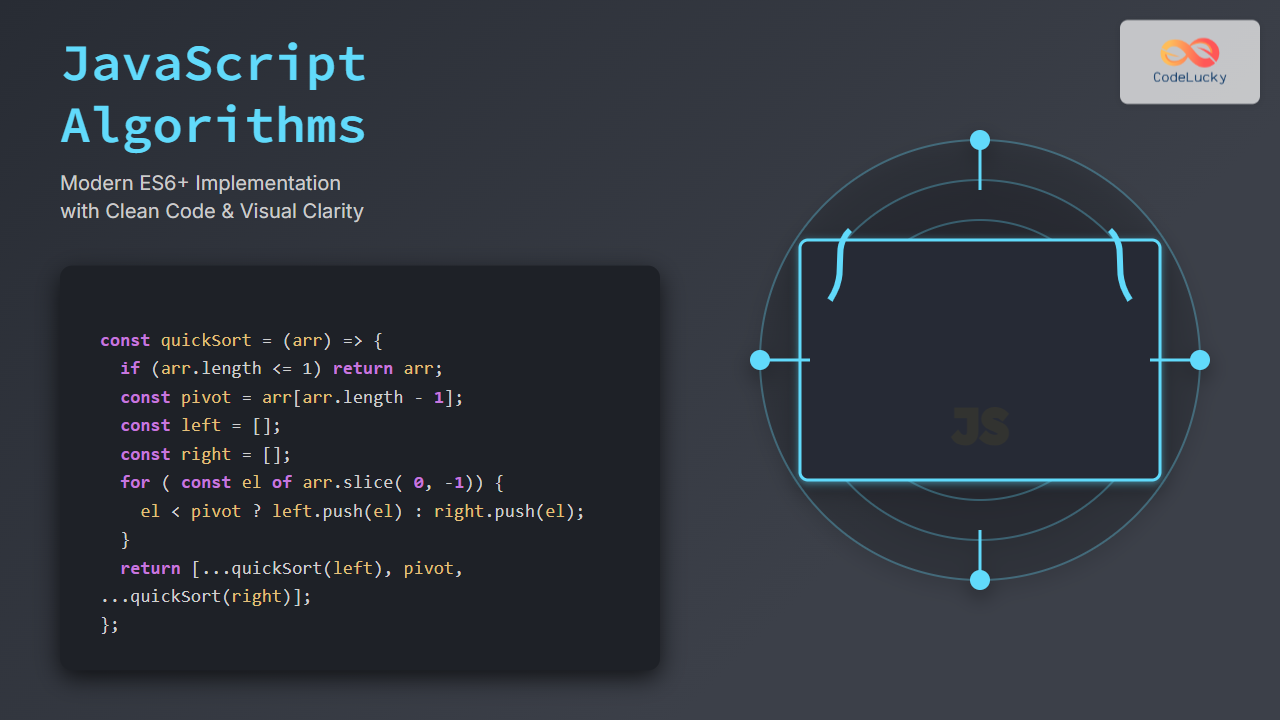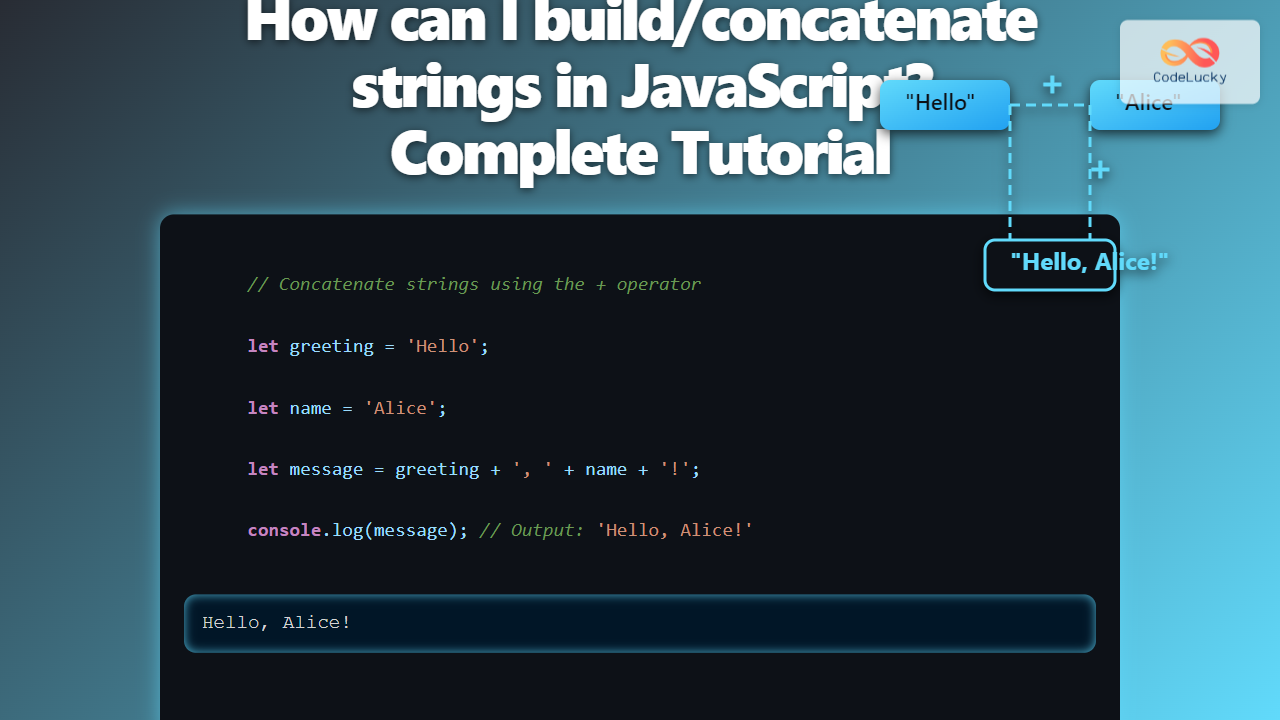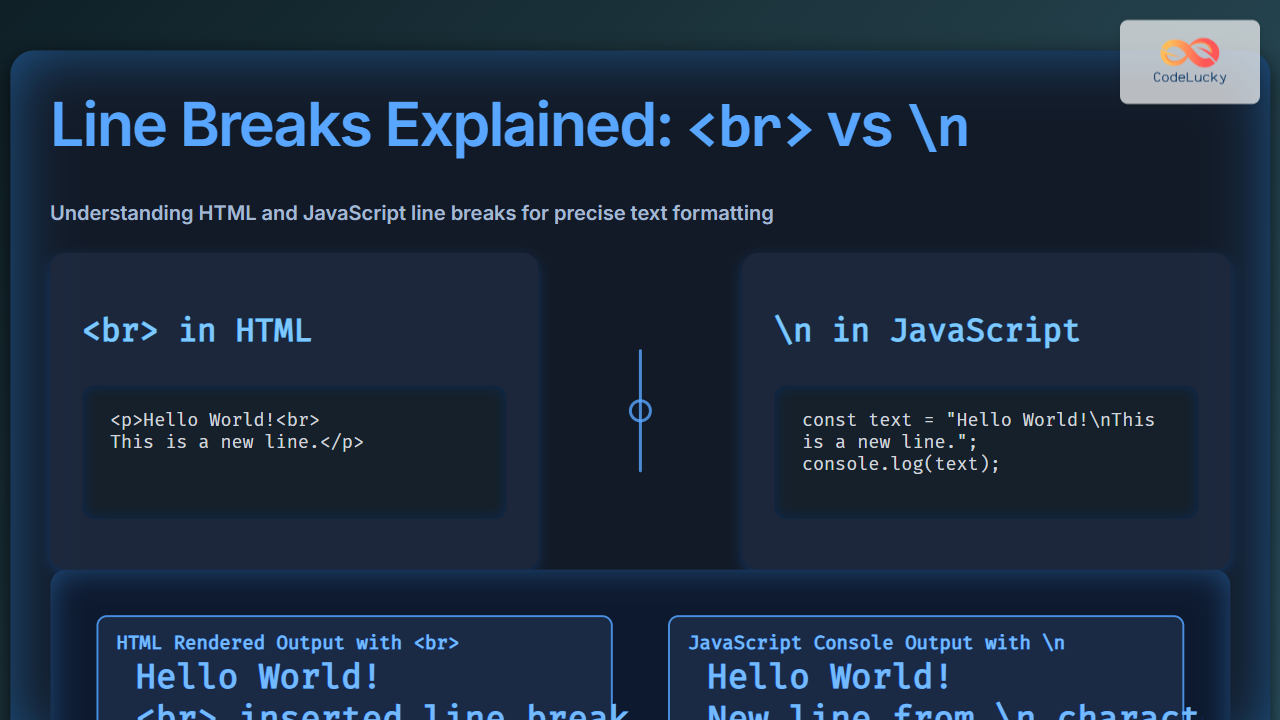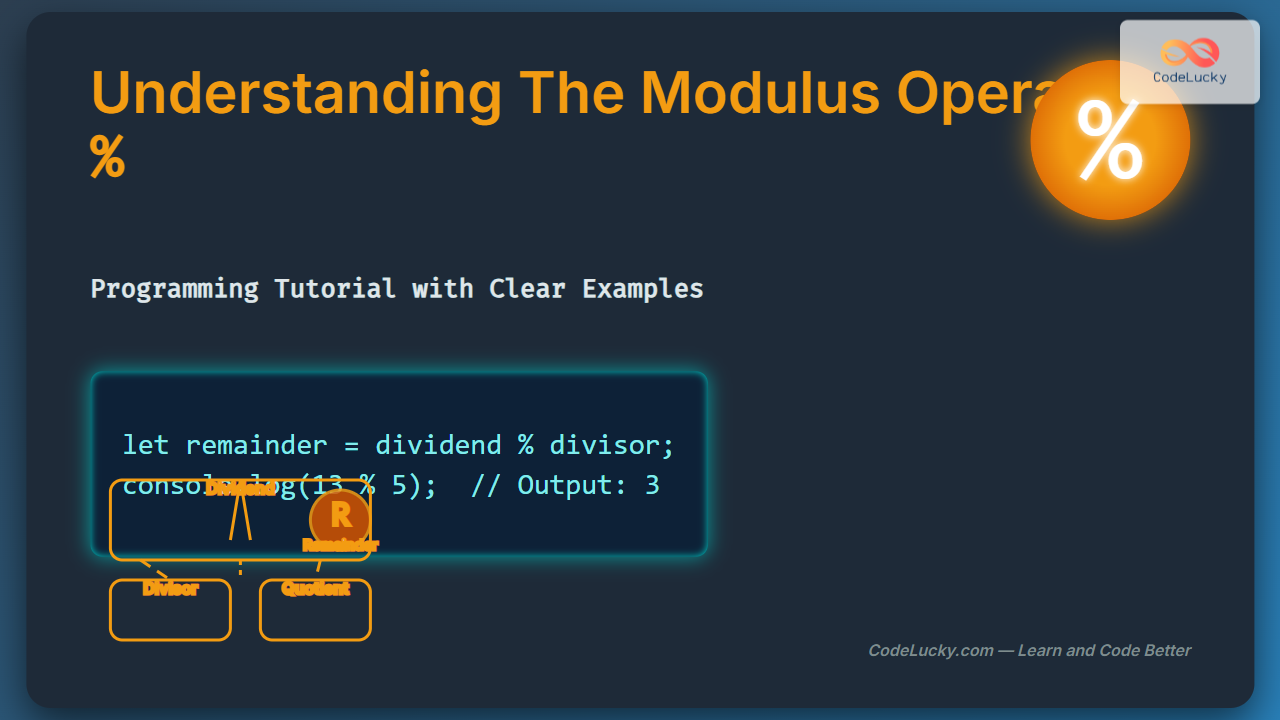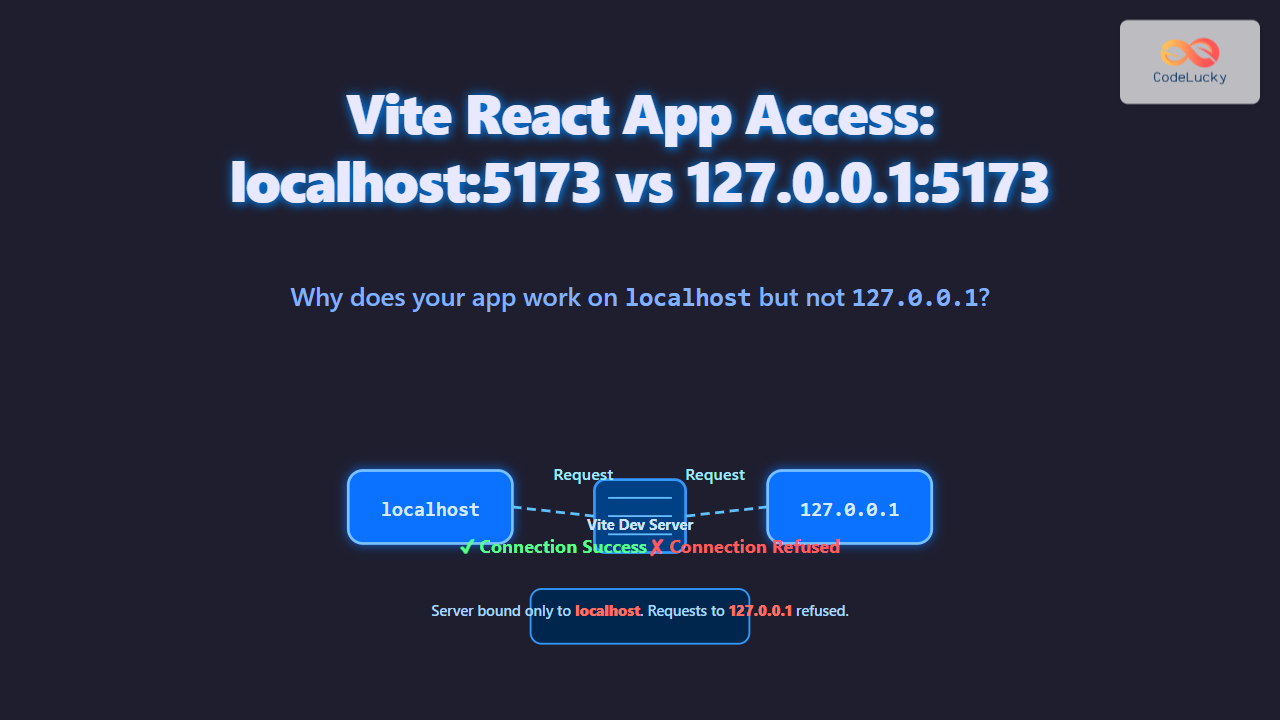JavaScript RegExp toString() Method: String Representation
The toString() method in JavaScript’s RegExp object is used to obtain a string representation of a regular expression. This method returns the regular expression pattern as a string, including any flags. Understanding how to use toString() can be valuable for debugging, logging, or simply inspecting regular expressions in your code.
Definition and Purpose
The toString() method of the RegExp object returns a string representing the regular expression. This includes the pattern and any flags (e.g., g, i, m).
Syntax
regexObj.toString()
Parameters:
- None
Return Value:
- A string representing the regular expression.
Examples
Let’s explore the toString() method with practical examples.
Basic Usage
In this example, we create a regular expression and use toString() to get its string representation.
const regex1 = /hello/i;
const str1 = regex1.toString();
console.log(str1);
Output:
/hello/i
Regular Expression with Global Flag
Here, we create a regular expression with the global flag (g) and check its string representation.
const regex2 = /world/g;
const str2 = regex2.toString();
console.log(str2);
Output:
/world/g
Regular Expression with Multiple Flags
This example demonstrates a regular expression with multiple flags (i, g, and m).
const regex3 = /test/igm;
const str3 = regex3.toString();
console.log(str3);
Output:
/test/igm
Using toString() with the RegExp Constructor
The toString() method works the same way, whether the RegExp object is created using a literal or the RegExp constructor.
const regex4 = new RegExp("example", "gi");
const str4 = regex4.toString();
console.log(str4);
Output:
/example/gi
Practical Use Case: Logging Regular Expressions
Logging regular expressions can be helpful for debugging. Here’s how you can use toString() for logging.
function logRegex(regex) {
console.log("Regular Expression:", regex.toString());
}
const regex5 = /pattern/;
logRegex(regex5);
Output:
Regular Expression: /pattern/
Use Case: Validating Regular Expression Input
You can use toString() as part of validating regular expression input, comparing string representations to ensure consistency.
function validateRegex(regex, expectedString) {
const regexString = regex.toString();
if (regexString === expectedString) {
console.log("Regex is valid");
} else {
console.log("Regex is invalid");
}
}
const regex6 = /data/i;
validateRegex(regex6, "/data/i");
Output:
Regex is valid
Combining toString() with Other String Methods
You can combine toString() with other string methods for more advanced manipulation.
const regex7 = /modify/g;
const str7 = regex7.toString().toUpperCase();
console.log(str7);
Output:
/MODIFY/G
Use Case: Dynamic Regular Expression Generation
toString() can be helpful when dynamically generating regular expressions and needing to inspect their final form.
function createRegex(base, flags) {
const regex = new RegExp(base, flags);
console.log("Generated Regex:", regex.toString());
return regex;
}
const regex8 = createRegex("dynamic", "i");
Output:
Generated Regex: /dynamic/i
Working with Unicode Regular Expressions
The toString() method also correctly represents Unicode regular expressions.
const regex9 = /你好/g;
const str9 = regex9.toString();
console.log(str9);
Output:
/你好/g
Regular Expression with Special Characters
Special characters in regular expressions are also correctly represented in the string output.
const regex10 = /[$^*+?(){}.]/g;
const str10 = regex10.toString();
console.log(str10);
Output:
/[$^*+?(){}.]/g
Advanced Use Case: Regular Expression Comparison
You can use toString() to compare two regular expressions by comparing their string representations.
function compareRegex(regexA, regexB) {
const stringA = regexA.toString();
const stringB = regexB.toString();
if (stringA === stringB) {
console.log("Regular expressions are identical.");
} else {
console.log("Regular expressions are different.");
}
}
const regex11 = /example/i;
const regex12 = /example/i;
const regex13 = /different/g;
compareRegex(regex11, regex12);
compareRegex(regex11, regex13);
Output:
Regular expressions are identical.
Regular expressions are different.
Conclusion
The RegExp.prototype.toString() method in JavaScript is a simple yet powerful tool for obtaining a string representation of a regular expression. It is beneficial for debugging, logging, validating, and comparing regular expressions, providing a clear and consistent way to inspect regular expressions in your JavaScript code. Understanding and utilizing this method can significantly improve your ability to work with regular expressions effectively.

